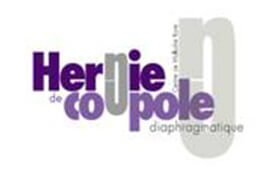The Congenital Diaphragmatic Hernia (CDH) Reference Centre has been certified by the Ministry of Health (in 2009, then again in 2017). This certification enables a mission to be drawn up (see mission details below) with a view to provide improved treatment options for patients suffering from Diaphragmatic Hernia in metropolitan France and Overseas Departments and Territories.
This certification has been granted under the National Plan for Rare Diseases.
The Reference Centre operates across 3 sites:
- Jeanne De Flandre Hospital at Lille: Reference Centre and Coordinating site.
This site coordinates the whole national network, specializing in neonatal intensive care and long term medical follow-up.
Head of Centre is Prof. Laurent STORME, Pediatrician-Neonatologist
- Neonatal Intensivist Antoine Béclère Hospital at Clamart (Assistance Publique – Hôpitaux de Paris): Reference Centre and Constituent site.
This site specializes in antenatal diagnosis and management.
Head of Centre is Prof. Alexandra BENACHI, Gynaecologist-Obstetrician
- La Timone Children’s Hospital at Marseille (Assistance Publique – Hôpitaux de Marseille): Reference Centre and Constituent site.
This site specializes in surgical management.
Head of Centre is Dr. Nicoleta PANAIT, Paediatric Surgeon.
This Reference Centre consolidates and mobilizes multidisciplinary experts for the benefit of young patients and their parents to provide diagnoses, early medical and surgical management, and long-term monitoring for children suffering from CDH.
It coordinates structured action paths for care, training and research.
The Reference Centre relies on Competence Centres located throughout France. The Competence Centres contribute on a regional level to the missions and actions of the Reference Centre. In particular, they provide appropriate treatment management and follow-up closer to home for patients suffering from this rare disorder.
These Centres also participate in the design of care protocols, and are involved in research on both national and international scales.
On this website you will find information on CDH, on the teams who provide care for this disorder in France, and also tips to help with necessary day-to-day activities.
This website provides information for families of patients, for health professionals and others with an interest in Congenital Diaphragmatic Hernia.
Missions of the Diaphragmatic Cupola Hernia Reference Centre
FACILITATE DETECTION AND DIAGNOSIS OF CDH
- Organize screening options through health professionals;
- Improve access to screening tests for CDH to provide families with earlier diagnosis of the condition;
- Define treatment management strategies, and psychological and social support.
IMPROVE ACCESS TO CARE AND QUALITY MANAGEMENT
- Facilitate diagnosis, ensure access to appropriate care and provide quality psychological support for patients and families. A multidisciplinary team is responsible for overall management from diagnosis through to hospital discharge;
- Organize long-term follow-up for patients via regular consultations throughout childhood. These health checks allow early detection and treatment of any complications associated with CDH.
COORDINATE CLINICAL PRACTICE ON A NATIONAL LEVEL
The Reference Centre is the preferred point of contact for the Competence Centres, administrative authorities and patient associations. It is the repository for national expertise in the field. Its role is:
- To define care management protocols
- To promote and publicize diagnostic and treatment protocols, as well as recommended best practices;
- To inform health professionals of these recommendations and coordinate communications between health, medical and social organizations.
TRAINING AND EDUCATION FOR HEALTH PROFESSIONALS
- Participate in training and information sessions for health professionals, both initially and in-service;
- Compile and distribute information to patients’ families and their close contacts.
RESEARCH
The Reference Centre coordinates research activities via:
- Epidemiological monitoring of the disorder;
- Appraisal and experimental work with innovative medical practices and techniques;
- Development of clinical and fundamental research.


